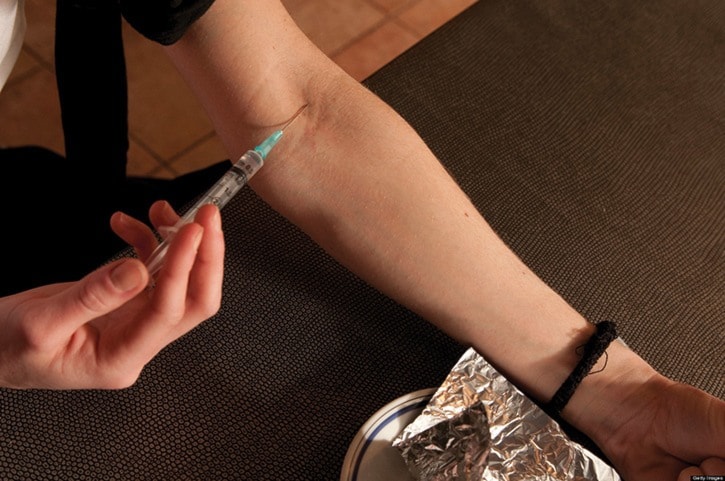 While a lot of emphasis is being put on the statistics relating to overdose deaths, paramedics working on the West Shore are struggling to help the patients they save, but are still ultimately lost.
While a lot of emphasis is being put on the statistics relating to overdose deaths, paramedics working on the West Shore are struggling to help the patients they save, but are still ultimately lost.
“One of the issues we have is that naloxone has been touted as a great drug, and it is … (But) it’s not the magic pill everyone thinks (it is),” said Brad Cameron, B.C. Emergency Health Services district manager for Victoria. “They depend too much on naloxone as the fix-all.”
When paramedics arrive on scene and begin their assessment, Cameron said, their first concern is checking airways and airway management. As for naloxone, that comes further down the stream of care. “We’re often finding we’re getting to patients and they’re hypoxic – their brains have been deprived of oxygen.”
While paramedics can usually restore a heartbeat, Cameron said overdose patients are suffering an increasing number of significant brain injuries caused by a lack of oxygen. For the patients laying in local hospital beds, he added, they won’t be leaving the same person as they came in as and some won’t ever leave – the survivors that didn’t really survive.
In January, B.C. Ambulance Service responded to 12 suspected overdose or poisoning events in the five West Shore municipalities. By Feb. 18, crews had already responded to 11 more such calls.
 Paramedics responded to 157 of these calls last year – up almost 50 from 2015 – on the West Shore alone. B.C. Emergency Health Services could not confirm how many of those resulted in fatalities. And while those numbers include all overdose or poisoning calls, Cameron confirmed the vast majority stemmed from illicit drug use.
Paramedics responded to 157 of these calls last year – up almost 50 from 2015 – on the West Shore alone. B.C. Emergency Health Services could not confirm how many of those resulted in fatalities. And while those numbers include all overdose or poisoning calls, Cameron confirmed the vast majority stemmed from illicit drug use.
View Royal Fire Chief Paul Hurst noted most of the overdose calls his department responds to are believed to involve heroin. View Royal Fire Rescue responded to four overdose calls in January (with one fatality) and had already responded to six calls (again, with one fatality) between Feb. 1 and 21.
“It’s unprecedented in my 33-year career,” Hurst said. “Five years ago if you got a call for a heroin overdose that was an anomaly.” Now, he said, it’s the norm. “I can’t say whether it’s fentanyl … (but) we weren’t attending to heroin overdoses when it was just heroin.”
With a supply of naloxone on all the department’s trucks, and all firefighters trained in how to administer the drug, “that’s a massive departure from what our care and treatment model was,” the chief said. Hurst added that if someone told him they would be carrying drugs on the trucks and volunteer firefighters would be administering them, “I would have told you you were crazy.”
Victoria is also home to three supervised drug consumption sites, a relatively new service for the region. But those sites seem to doing their part to keep people alive, Cameron noted.
“We’re not seeing people die (there) … They’re surrounded by a team of harm reduction officers.” Those individuals are trained to immediately respond if they think someone may be overdosing, he added.
 “We’re finding that the majority of deaths are coming from the recreational community … That’s alarming to us as a service,” he said.
“We’re finding that the majority of deaths are coming from the recreational community … That’s alarming to us as a service,” he said.
With a number of recreational users found on the West Shore, Cameron noted many are using drugs alone or with people who are not trained to respond. And they are not getting the care they need early enough, even if they do have a naloxone kit.
The View Royal department has seen patients from all walks of life, in all areas of the town, and has even responded to overdose calls at family functions. “It’s quite remarkable to watch how this is affecting families in our community,” Hurst said. “We’re seeing a really wide spectrum, from teens to people in their 50s … Fentanyl is not discriminating and that’s the unnerving part.”
And it’s something he really wants the public to understand.
“There is a stigma and a stereotype that surrounds illicit drug use,” Hurst said. “The public has a perception … all the illicit drugs are limited to the back alleys of urban centres … That is so not true.”
Cameron reiterated the importance of calling 911 in the event of an overdose, even if it is just suspected. Dispatchers are trained to begin a patient’s assessment and can coach callers through potentially lifesaving practices. “The earlier someone phones, the far better off everyone is … There’s no judgment on our part,” he said.
Watch for the second article in this two part series in Wednesday’s edition of the Gazette.
katie@goldstreamgazette.com
